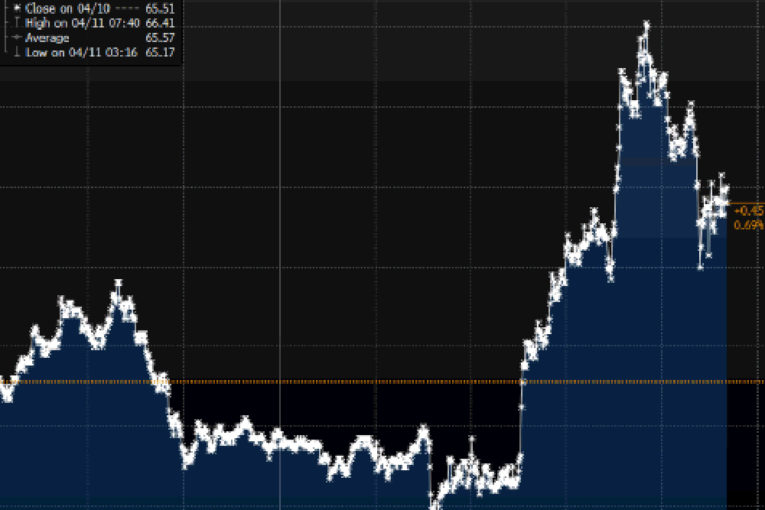
LONDON — Oil hit its highest in more than three years on Wednesday after U.S. President Donald Trump threatened to fire missiles at Syria in response to a suspected chemical attack last week.
Some major airlines were re-routing flights on Wednesday after Europe’s air traffic control agency warned aircraft flying in the eastern Mediterranean to exercise caution due to possible air strikes on Syria.
Trump has criticized Moscow for standing by Syrian President Bashar al-Assad.
Brent crude jumped to a high of nearly US$72 a barrel, its strongest since early December 2014, after Trump’s comments, while gold rallied for a fourth day, as investors ditched risk-linked assets such as equities.
Brent stood at US$71.85 a barrel by 1143 GMT, up 81 cents on the day, while U.S. crude futures rose 83 cents from their last close to US$66.34 a barrel.
The United States and its allies are considering air strikes against Assad’s forces following a suspected poison gas attack last weekend.
Syria is not a significant oil producer, but any sign of conflict in the region tends to trigger concern about potential disruption to crude flows across the wider Middle East, home to some of the world’s biggest producers.
There are also concerns that the United States could renew sanctions against Iran.
“The focus right now is definitely on a possible military strike against Syria,” Commerzbank head of commodity research Eugen Weinberg said.
“We think the fundamentals do not justify the current price, but unfortunately, the market is focusing more on the politics and ignoring some of the warning signs, especially the hike in U.S. oil production.”
Saudi Arabia Energy Minister Khalid al-Falih said on Wednesday his country would not sit by and let another supply glut surface, implying that the de-facto leader of the Organization of the Petroleum Exporting Countries (OPEC) would continue to withhold supply.
Not all oil market indicators suggest the price will continue to rally strongly, analysts said.
U.S. crude inventories rose by 1.8 million barrels in the week to April 6 to 429.1 million, according to a report by the American Petroleum Institute (API) on Tuesday, compared with analysts’ expectations for a decrease of 189,000 barrels.
The U.S. Energy Information Administration (EIA) said on Tuesday that it expects domestic crude oil production in 2019 to rise by more than previously expected, driven largely by growing U.S. shale output.
© Thomson Reuters 2018
You can read more of the news on source
